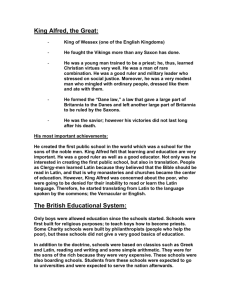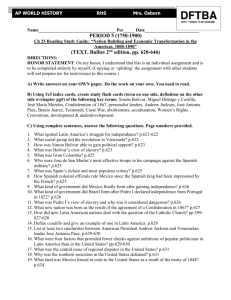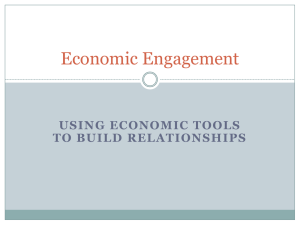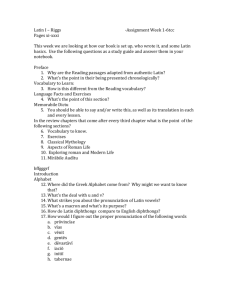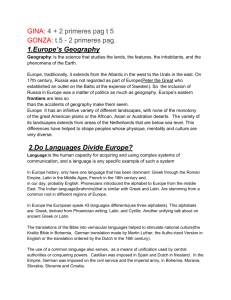Latin America, Part 1
advertisement
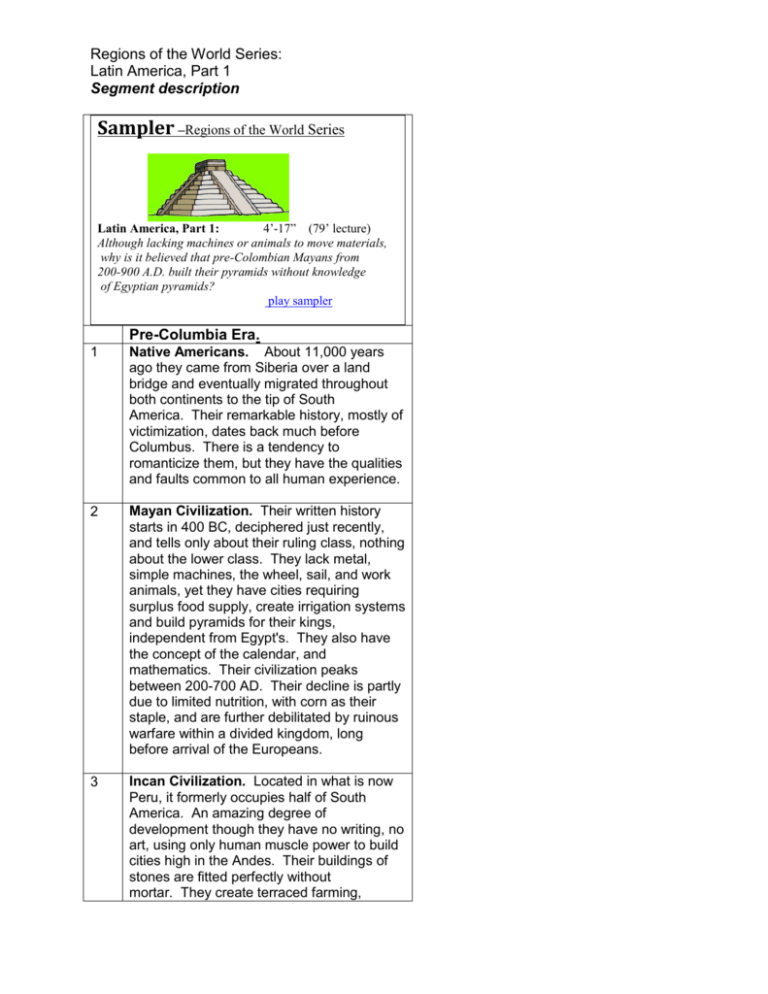
Regions of the World Series: Latin America, Part 1 Segment description Sampler –Regions of the World Series Latin America, Part 1: 4’-17” (79’ lecture) Although lacking machines or animals to move materials, why is it believed that pre-Colombian Mayans from 200-900 A.D. built their pyramids without knowledge of Egyptian pyramids? play sampler Pre-Columbia Era. 1 Native Americans. About 11,000 years ago they came from Siberia over a land bridge and eventually migrated throughout both continents to the tip of South America. Their remarkable history, mostly of victimization, dates back much before Columbus. There is a tendency to romanticize them, but they have the qualities and faults common to all human experience. 2 Mayan Civilization. Their written history starts in 400 BC, deciphered just recently, and tells only about their ruling class, nothing about the lower class. They lack metal, simple machines, the wheel, sail, and work animals, yet they have cities requiring surplus food supply, create irrigation systems and build pyramids for their kings, independent from Egypt's. They also have the concept of the calendar, and mathematics. Their civilization peaks between 200-700 AD. Their decline is partly due to limited nutrition, with corn as their staple, and are further debilitated by ruinous warfare within a divided kingdom, long before arrival of the Europeans. 3 Incan Civilization. Located in what is now Peru, it formerly occupies half of South America. An amazing degree of development though they have no writing, no art, using only human muscle power to build cities high in the Andes. Their buildings of stones are fitted perfectly without mortar. They create terraced farming, Regions of the World Series: Latin America, Part 1 Segment description irrigation, build bridges of grass able to bear great weight. They know the art of mummification. They successfully practice brain surgery. The wonder of images hundreds of feet in size on the ground which can be scanned from the air. They are a conquering empire, yet are conquered by Pizarro from Spain with a small army. Europe In the New World 4 Arrival of Columbus. He never knows where he is geographically. He destroys native populations in brutal manner. His voyage opens travel to the New World, changing it forever, a disaster to Native Americans while a gain for Europeans. By the end of the 1500s 90% of native population is wiped out, with intentionality added to lack of resistance to newly introduced diseases. 5 The slave trade. Resistance to slavery by Native Americans leads to the Atlantic slave trade from Africa, with Brazil as the heart of it, controlled by Portugal. European demand for sugar. The debate about the difference between the Catholic versus the Protestant view of slavery and treatment of African slaves in North America compared to South America, and the factors involved. The need not to idealize Native Americans who have class differences among them related to color. The rise of commercial agriculture and the further growth of slavery. The 19th Century 6 The end of slavery. At the beginning of the 19th century the Spanish and Portuguese empires decline and the ideals of the French Revolution carries over to Latin America, leading to establishment of republics in Brazil and Argentina. Public education improves but most economic and social structures remain in place with classes and exploitation of the lower classes. Some land reform but question of control results in a native aristocracy. Regions of the World Series: Latin America, Part 1 Segment description 7 Political change 1820-1870. The strong man in military office comes to power, accompanied by much violence. The distorted undiversified economy is vulnerable to fluctuations of European market for these 1 or 2 products. The life of women improves, the church declines. Continued struggles between reform and business interests in Latin American countries. 9 Cuba. Prelude to Spanish-American War in 1898 is U.S. ultimatum to Spain to bring economic order to Cuba by either giving it independence or by crushing its revolt, or U.S. will solve it. The is the beginning of the U.S. Empire. After the war, Cuba is nominally independent but the U.S. calls the economic shots.


